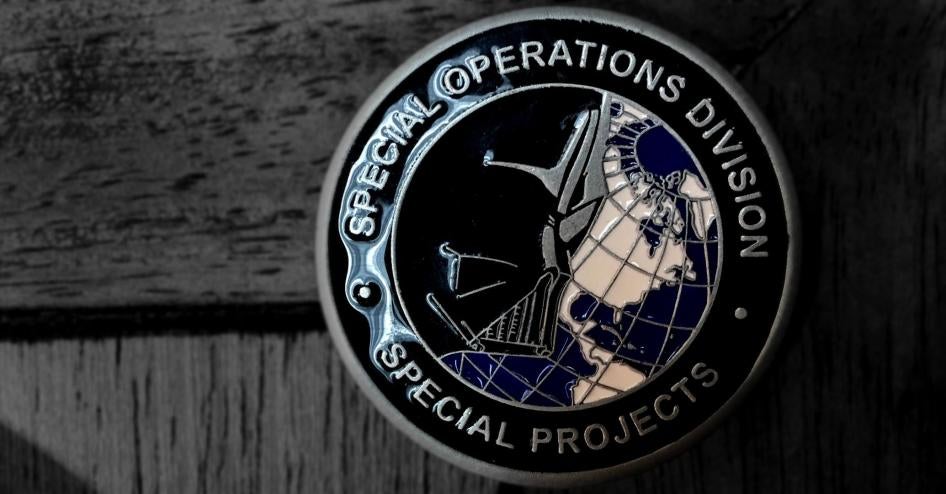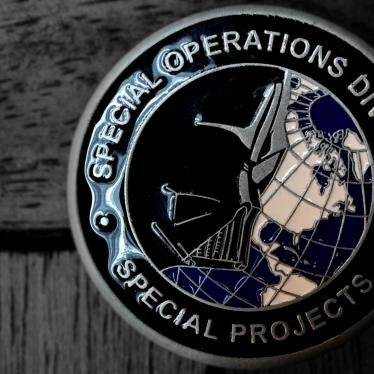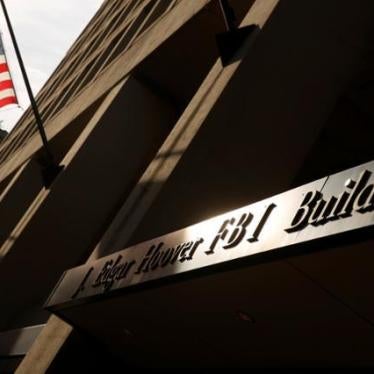(Washington, DC) – Evidence suggests US authorities deliberately conceal the facts about how they found information in a criminal case and may be doing so regularly, Human Rights Watch said in a report released today. Withholding these facts to cover up investigative practices, including potentially illegal ones, harms defendants’ rights and impedes justice for human rights violations.
The 77-page report “Dark Side: Secret Origins of Evidence in US Criminal Cases,” documents the use of alternative explanations for how evidence was found, a practice known as “parallel construction.” This practice could prevent courts from scrutinizing the legality of questionable investigative methods, including surveillance. Such scrutiny can deter misconduct, since judges normally bar illegally obtained evidence from trial.
“Covering up how evidence was originally found deliberately hoodwinks defendants and judges, severely weakening constitutional fair trial rights,” said Sarah St.Vincent, researcher on US surveillance at Human Rights Watch. “If the government is allowed to violate the US Constitution’s protections and then cover its tracks, this could undermine human rights for people whose liberty is at stake, or anyone else subjected to illegal government surveillance or other unlawful procedures.”
The report is based on records from 95 US federal and state criminal cases, analyses of executive branch documents, and 24 interviews with defense attorneys, current and former US officials, and other people with specialized knowledge about the potential deliberate concealment of investigative methods in this manner and the consequences for rights.
Human Rights Watch identified evidence suggesting that US authorities use a range of tactics to create a new story about how an investigation began in order to avoid revealing how information was originally found. The most widely known is commonly described by law enforcement as a “wall stop” or “whisper stop.” Under this practice, a law enforcement or intelligence agency, possibly using information obtained by various forms of surveillance, asks state or local police to find a pretext – often a minor traffic violation – to stop a suspect and then develop a reason to search their vehicle.
The Special Operations Division of the Drug Enforcement Administration may be extensively involved in passing tips to law enforcement entities, which may then engage in the practice of parallel construction to prevent those tips or the other sources underlying them from being revealed in court. The Special Operations Division and other federal bodies could be using parallel construction techniques frequently and routinely, Human Rights Watch found.
These concealment methods could be used to prevent the disclosure of techniques such as warrantless surveillance under intelligence authorities such as Section 702 of the Foreign Intelligence Surveillance Act and Executive Order 12333. The government uses Section 702 and the executive order to sweep up massive amounts of data on people outside and inside the US. By concealing how evidence is collected, the government prevents the US Congress and the public from understanding the consequences of this and other controversial laws. Section 702 is currently the subject of a major reform battle in Congress, adding urgency to the issue.
Parallel construction “flies in the face of everything that our justice system stands for,” a Virginia-based defense attorney who has represented a client in a case raising concerns about possible parallel construction said in an interview with Human Rights Watch.
In the US criminal justice system, judges typically bar the prosecution from introducing evidence the government obtained through illegal activities, a doctrine known as “fruit of the poisonous tree.” By dodging this rule, the concealment of investigative practices through parallel construction could also remove a crucial incentive for the authorities to obey the law.
When defense attorneys attempt to find out whether such concealment has occurred in a case, they face stiff opposition from prosecutors, Human Rights Watch found. An inability to compel prosecutors to reveal original sources of information can put fair-trial rights in jeopardy, as well as the human right to be notified of any government interferences with privacy.
Congress should adopt laws requiring the government to disclose complete information to defendants about the origins of the investigations in their cases, Human Rights Watch said. Judges should also consider directing the government to disclose any previously unrevealed investigative methods when the circumstances of the case suggest that parallel construction may have occurred.
“Justice cannot rest on secret evidence, and the shadows are where abuses flourish,” St.Vincent said. “Congress, the courts, the Justice Department, and the intelligence agencies should end parallel construction now.”









